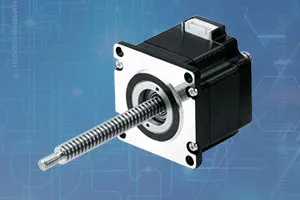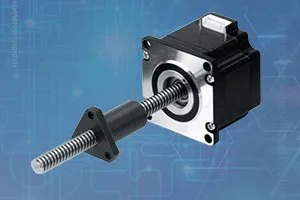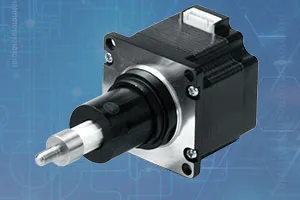The Basic Types of Linear Stepper Motors
As a compact linear actuator, linear stepper motors are often used to realize linear motion or linear reciprocating motion. The main principle is through the screws and nuts meshing, adopting some method to prevent screws and nuts relative rotation, to achieve the linear movement of the mechanism. The purpose of this article is to introduce three basic structures of linear stepper motors. 


NON-CAPTIVE LINEAR STEPPER MOTORS
The nuts of the non-captive linear stepper motors are integrated with the rotor. The lead screw can go through the motor or be completely separated from the motor as a part. There are no reasonable limits to the shaft's stroke, but it must be attached to an assembly that cannot rotate. This will then allow the lead screw to extend and retract without rotating, and travel freely in and out of the motor body. In certain setups, the motor body may serve as the drive or the nut in the assembly. In most cases, the anti-rotation is located at the attachment point of the screw and is usually formed by a cut or machine thread at the end of the screw. The non-captive is potentially the shortest overall length assembly. Using the connector supplied and AWG 16 or 18 wire, connect to the power supply as in the diagram below.
EXTERNAL LINEAR STEPPER MOTORS
The lead screws of the external linear stepper motors are integrated with the motor rotor as a part. It has an external drive nut that can be mounted to a carriage assembly. Linear motion is created by the nut traversing back and forth on the lead screw as it turns. The common end feature of the screw is a bearing journal. External linear stepper motors are most akin to motorized rails where the nut is replaced by a driven carriage assembly.
CAPTIVE LINEAR STEPPER MOTORS
Captive linear stepper motors have a threaded drive screw held mostly inside the motor connected to a spline. The spline shaft provides built-in anti-rotation, enabling it to be extended and retracted as one unit without the need for any additional anti-rotation mechanisms. The captive actuator is designed for short strokes of up to about three inches. The basic design is least tolerant of system misalignment and is the motor-protected actuator style because it's self-contained. The captive has the longest basic body style.
